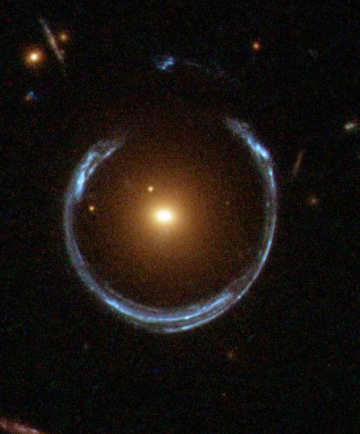Survey astronomy
I am interested in the cartography of the night sky. The ultimate goal would be to make maps of the Universe at all wavelengths, from gamma rays to radio, and out to the limit of observability - this is essentially when we see so far back in time we reach the Big Bang. We are a very long way from achieving this goal. In fact we are less than 1% of the way at any wavelength, in terms of recording images of all the observable galaxies in the Universe. But with each new improvement in detectors and telescopes we get a little closer to the goal, and can make discoveries of new types of object. From 2005-2012 I worked as the Survey Scientist on the UKIRT Infrared Deep Sky Survey, to make the largest (in terms of the volume surveyed) map of the sky at near-infrared wavelengths, 1 to 2.5 microns. My research over the last decade has concentrated on exploiting these maps, especially to find interesting rare types of object: the highest-redshift quasars and the coolest brown dwarfs. These topics are described in more detail below, together with a section on gravitational lenses.
The gratuitous picture below shows a tiny portion of the Milky Way, near the centre, imaged by UKIDSS.

High-redshift quasars

Quasars are the very bright nuclei of some galaxies, where we are seeing the light from the hot disk of matter as it spirals into a supermassive black hole. These are the brightest non-transient objects in the Universe, and so can be seen very far away, and consequently far back in time. Further away means higher redshift, i.e. the light is stretched to longer wavelengths as the Universe has expanded. The higher the redshift, the more interesting the quasar is, but also the more difficult to find, because at redshifts greater than 6 the light is stretched to infrared wavelengths. With Daniel Mortlock and Mitesh Patel, I found the first quasar with a redshift greater than 7, named ULAS J1120+0641, using UKIDSS. Play the video to give yourself some idea of the difficulty of finding the source (the little red dot).
Because of their high luminosities quasars are the most useful sources for studying conditions in the Universe early in its history, when it was just a few percent of its current age i.e. when the age of the Universe was a few hundred million years, compared to the current age of nearly 14 billion years. People have found this source particularly interesting because the mass of the black hole is measured to be some 2 billion times the mass of the Sun, and it is hard to understand how such a massive black hole could form is such a short time after the Big Bang. For me personally what I find more interesting is what the source tells us about conditions in the Universe at that time. Analysis of the light from the source shows that a substantial fraction of the hydrogen in the space surrounding the quasar is in neutral form rather than ionised. This tells us we are getting back to the time when there were very few stars alive, to ionise the hydrogen: so we are getting close to the time when the lights in the Universe first turned on.
The coolest stars and brown dwarfs

A star is a large blob of gas that has collapsed under gravity, and got sufficiently hot in the centre to start burning hydrogen to helium. The larger the mass the hotter the star. Conversely for smaller masses, the lower the temperature, and at a surface temperature of around 2000K a very interesting transition occurs. When the mass is less than 8% of the mass of the Sun, the core of the star is no longer hot enough to burn hydrogen. So although the star gets warm during the gravitational collapse stage, it then just sits there cooling off. Such objects are called brown dwarfs, rather than stars. Because of their low surface temperatures, reaching as low as 400K, most of their light is emitted at infrared wavelengths. Although predicted in the 1960s, they were only discovered in the 1990s thanks to improvements in near-infrared detectors. New classification sequences L, T and Y were developed to describe the new spectral types discovered in moving to successively cooler temperatures. The transition from star to brown dwarf occurs near type L3.
Infrared surveys, firstly 2MASS, and then UKIDSS, have allowed the discovery of hundreds of brown dwarfs. This has required a spectrum of each source to measure its spectral type. The samples are nevertheless heterogeneous and therefore not well suited to studying the properties of the population. For this reason I became interested in the problem of measuring the spectral type of cool stars and brown dwarfs directly from the imaging data used to discover the source, without the need to obtain a spectrum. With Nathalie Skrzypek I developed the photo-type method which we showed is accurate to within one spectral sub-type, and we used this to produce the largest homgeneous sample of L and T dwarfs, totaling 1361 sources. My goal now is to extend this to include the coolest stars, types M7-M9. These large and homogeneous samples, with thousands of sources, will allow an accurate measurement of the luminosity function of the coolest stars and brown dwarfs.
Gravitational lensing

The path of light is bent when it passes close to a massive astronomical object, a star or a galaxy, in a manner similar to the bending of light by a glass lens. Such a gravitational lens generally (1) distorts the image of what is behind it, but in some cases (2) can produce multiple images of the background source. These are known respectively as (1) weak and (2) strong gravitational lensing. In the most extreme  case of strong lensing a background galaxy can be imaged into a partial or complete Einstein ring, as illustrated. Because the bending of light is directly proportional to the mass, strong gravitational lenses allow one to measure the mass of the lens. Einstein ring images are particularly useful for determining accurate masses of galaxies and learning about dark matter. Their analysis is nevertheless a complex inversion problem since it involves simultaneously reconstructing the true light profile of the source and the mass profile of the lens. In my view Einstein ring images have been underexploited: they are much more useful than is generally appreciated. I believe the reason for this is historical, that most of strong-lensing theory was developed for analysing images of quasars, which are simple point sources, either doubly or quadruply imaged. These images contain limited information. Ring images like the one illustrated contain enormously more information. For this reason with my current student Conor O'Riordan I am developing a deeper theoretical understanding of how Einstein rings can constrain the distribution of mass in the lens.
case of strong lensing a background galaxy can be imaged into a partial or complete Einstein ring, as illustrated. Because the bending of light is directly proportional to the mass, strong gravitational lenses allow one to measure the mass of the lens. Einstein ring images are particularly useful for determining accurate masses of galaxies and learning about dark matter. Their analysis is nevertheless a complex inversion problem since it involves simultaneously reconstructing the true light profile of the source and the mass profile of the lens. In my view Einstein ring images have been underexploited: they are much more useful than is generally appreciated. I believe the reason for this is historical, that most of strong-lensing theory was developed for analysing images of quasars, which are simple point sources, either doubly or quadruply imaged. These images contain limited information. Ring images like the one illustrated contain enormously more information. For this reason with my current student Conor O'Riordan I am developing a deeper theoretical understanding of how Einstein rings can constrain the distribution of mass in the lens.


